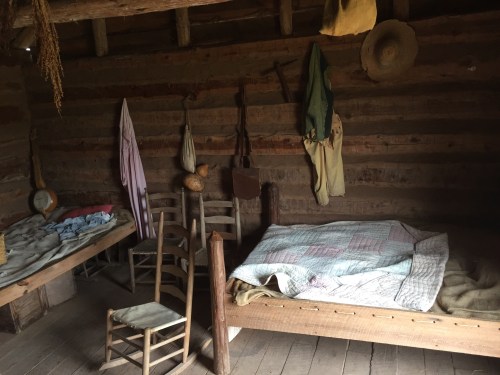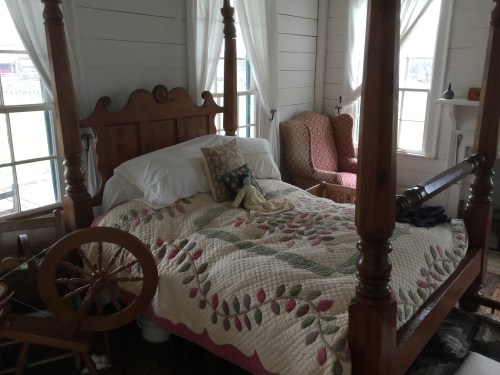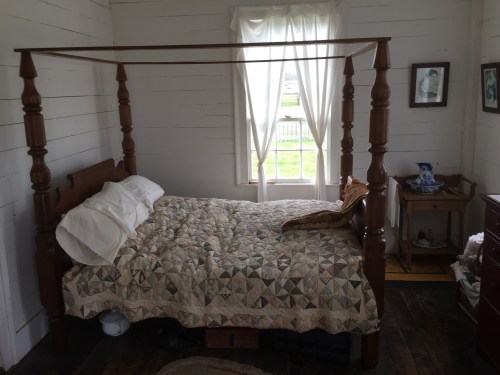I started this post over a week ago and then I became distracted. I had a batch of beer to brew, bees needed some attention, a little garden work and some physical therapy exercise got in the way. Let me finish this up as I have several more posts formulating in my scattered brain. FYI, today is January 31, 2019 as a point of reference.
A week ago, January 15th, was a dreary and cloudy day. I woke up early and was in kind of a blue funk. I decided I needed a mental health drive through the countryside. Those mental health drives have me looking for the perfect little piece of ground that would fit my bees, a chicken tractor or three and rows upon rows of raised beds! I had two big cups of coffee in the cup holders, a couple of apples and no planned destination.
The truck seemed to have a destination in mind so I let the small turbo diesel in my Ram 1500 have a loose set of reigns and off we went. As the miles started adding up I saw a sign for the town of Navasota. I love the rolling hills in the area and the area includes some top notch bee suppliers – Bee Weaver and across the invisible fence – R Weaver. I was tempted to swing by the honey tasting room at Bee Weaver but drove past the turn with the truck seemingly to wanting to roll on.
As I took the business route off the main highway toward Navasota I decided the drive was taking me toward, Washington on the Brazos, the birthplace of the Texas Republic. It was midweek, wintertime and a dreary day lent itself to some uncrowded exploration. I was the only guest at the State Park visitor center when I arrived. It turned into a personalized experience. After a 45 minute Texas history lesson in the reproduction Independence Hall I decided to visit the attached homestead farm of the last President of Texas, Anson Jones Barrington Farm. I paid the $5.00 fee and strolled into the farm grounds.
https://tpwd.texas.gov/state-parks/washington-on-the-brazos
Even though it was a midweek visit, the site was staffed by a young man and woman dressed in period costumes. Both were knowledgeable and great hosts. I should have had them pose for photos……..shame on me!

This is the view from the trail leading away from the parking lot. The farmhouse yard includes the cookhouse, smoke house and the chicken yard. The fields are lined with split rail fences just as would have been used in the 1840’s.


After walking past a tree lined pasture I approached the barn, animal pens and some storage sheds. All the structures are faithful reproductions from the period.


Cotton, corn and cattle were the staples of the time. The Brazos River Valley was an active cotton growing region during this time in Texas history.
https://tpwd.texas.gov/state-parks/washington-on-the-brazos/barrington-living-history-farm


No Butterball turkeys here. Heritage breed turkeys, chickens, hogs and cattle are found on the farm. Also found on the farm are oxen used to plough/plow the fields in the spring.





Not much growing in the winter garden. Housing for the slaves that lived in the property are on site. I missed the the hog butchering that occurred a couple of weeks earlier. The hog’s hair had been scraped off the carcass and was strewn about the yard and under the work table. Check the website for the farm activities offered throughout the year.

Not a typical southern plantation but more of a family farm. Even though slaves lived onsite, the farm work included every family member. Bunks were used in the upstairs portion of the house. The breezeway style is/was very common in the south to help stifle the heat a bit.




The downstairs interior included two bedrooms, dining area and a sitting room. I was impressed with the attention to period detail. Very well done.



The chicken/duck yard and sturdy coop were well built. There was a pasture located behind the yard with beef cattle, oxen and the requisite longhorn. Longhorns where not really common during the early years of the Texas Republic but thrived after the Civil War with the development of rail and big beef slaughter houses. It is estimated that there were as many 6,000,000 wild longhorns running free in Texas in 1860.
“An effort to supply the hide and tallow markets began in Texas shortly after the end of the Civil War. During the war, many longhorns from Texas had been driven into the Southeast (swimming the Mississippi River enroute) where they supplied the field kitchens of the confederate forces.12 Those first drives had taught the Texans that Longhorns could be driven long distances successfully and without much, if any, loss of weight. Having learned that lesson well, enterprising southerners began driving their longhorns north to the railheads at Abilene and Dodge City, where they were loaded onto trains and taken to Chicago and points east to supply leather and tallow (and to a far lesser extent, beef) markets of the wealthier northern states. That was the beginning of the glory years of cowboys and long distance cattle drives. By 1895 it has been estimated that over 10,000,000 head had been driven the length of the Chisholm, Goodnight and other trails from Texas and other southern states to the northern markets. These drives, which lasted in total less than thirty years and were often led by very young cwboys and “vaqueros”, became a part of the romantic western lore as the “legendary cattle drives of the old west.” Many of the more docile animals were also used, before being slaughtered, to pull wagon trains westward.13
During the memorable cattle drives, those millions of Longhorn bulls, cows, steers, and calves walked north along well worn trails and actually gained weight as they walked, all the while protecting themselves and their calves from predators, swimming rivers, and surviving desert heat and winter snows. The fact that they could not only survive but actually thrive under those conditions is a remarkable testament to the evolutionary advantages these animals had gained.”
Excerpt from – http://www.gandgtexaslonghorns.com/history
My next visit will include a big chunk of time in the Texas Star museum located onsite. So much to see here causedme to squander too much time on the farm……….but I am not complaining!
TTFN
Bishop
Jan 31, 2019 @ 18:20:59
Fascinating, thank you!
LikeLiked by 1 person
Jan 31, 2019 @ 22:11:48
Thanks Patty. I hope to get a chance to visit Los Osos in June – maybe we can visit some.
LikeLike
Feb 06, 2019 @ 03:32:34
What an interesting field trip! I would have enjoyed this destination very much. And by the way, I will be in Los Osos in July. 🙂 Great place!
LikeLiked by 1 person
Feb 06, 2019 @ 03:59:04
I should be in Los Osos the first week of June. A few weeks too early! One of these days we may cross paths.
LikeLike
Mar 01, 2019 @ 13:48:21
Bishop, I loved your post. I was born and raised in Texas but never visited Washington on the Brazos. Thank you so very much for sharing your interesting day.
LikeLike
Mar 01, 2019 @ 14:45:20
I will be back over there on March second for the Texas Independence Day celebrations. Reenactments of the signing in period costumes as well as more events at the Farm….should be interesting and educational.
LikeLiked by 1 person
Mar 27, 2019 @ 03:09:27
Definitely an interesting place to visit. We were there only a week or two from when you were there. While we visited they butchered a pig and showed the many ways it was used around the homestead. Fun times!
LikeLike